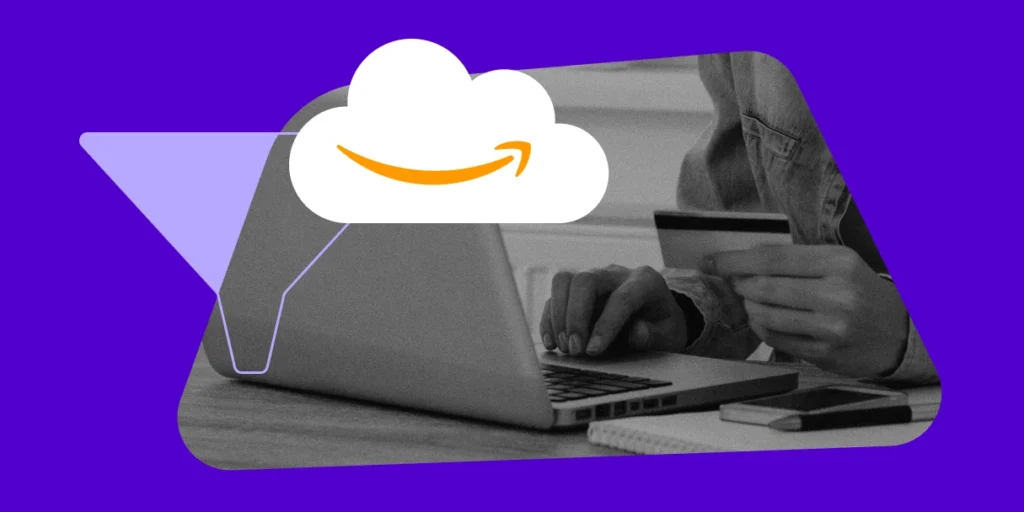It’s been another big year for Amazon.
For sellers, many of the site’s older, outdated features were retired, while new, more interactive ones were introduced, tested and officially launched.
Amazon itself made big moves, expanding into dozens of white-label brands and even influencer marketing. It was a whirlwind 12 months for the retail giant to say the least.
Are you all caught up on the Amazon changes 2017 saw? If not, take a minute to fill yourself in.
-
Subscribe with Amazon Goes Live
In April, third-party sellers got an extra perk: the Subscribe with Amazon platform. A different beast from the already existing Subscribe ‘n’ Save program, Subscribe with Amazon is designed for digital products only — not physical, deliverable ones.
Sellers who participate in the program get a dedicated detail page about their services, can offer different tiers of pricing, are allowed to create Prime-exclusive deals and may even be featured on the main Amazon storefront.

According to Tien Nguyen, Director of Technology at CPC Strategy, the new platform makes subscriptions easier than ever.
“It just makes it easier for people to subscribe to things they may not purchase otherwise, and provides Amazon with another revenue stream,” Nguyen said.
“I’d compare it to the Facebook login. It’s easier to register for a website if it’s just one click rather than entering your email and setting up a password.”
Full story: Amazon Launches “Subscribe with Amazon” Platform for 3P Sellers
-
Amazon Launches Influencer Program
Influencer marketing has been a hot topic in the last few years, especially as platforms like Instagram and Snapchat has blown up in popularity.

Amazon took steps in April to leverage this new niche by adding its very own Influencer Program, a platform designed specifically for social media influencers who tout products and shoppable content.
Influencers get their own Amazon URL and earn fees for customers/sales they drive to the site.
Full story: What is the Amazon Influencer Program?
-
Amazon Stores Open their Doors
In early summer, Amazon created “Amazon Stores,” self-service storefronts that sellers can use to show off their brands, products and other details.
Offering multiple pages of content, Amazon Stores let sellers better brand their buyers’ shopping experience across both mobile and desktop versions.
They can even add in rich media, images, video and more, and it’s all available through the Amazon Marketing Services tab of the admin area.

“In my personal opinion, these stores are a significant improvement over the older brand pages, and they should allow Vendors to get more creative with the design,” said Ryan Burgess, Marketplace Channel Analyst at CPC Strategy.
“Another super cool feature of Amazon Stores is that you can build highly customizable pages showcasing a single or small group of products, perfect for new launches. You can include videos, a slideshow of photos, text, all sorts of content to really push new products.”
Full story: Everything Vendors Need to Know About the New Amazon Stores
-
Private Label Brands Take Off
July saw Amazon’s list of private label brands skyrocket, with more than two dozen Amazon-owned food, clothing, electronics and houseware names hitting the scene.
The site’s line of batteries saw a 93-percent jump in sales over the year, and its baby wipes grew 266 percent – taking the No. 3 spot on the market behind Pampers and Huggies.

It’s likely this was only the beginning, though, as Quartz found additional brand names registered by Amazon that have yet to release products.
Full story: The Complete List of Amazon’s Private Label Brands
-
Prime Day Sales Jump 60%
Prime Day came and went this summer, with sales growing 60 percent over 2016. Its biggest item of the day was the Amazon Echo Dot, which was discounted from $50 down to $35.
Other hot commodities on Prime Day were a 55-inch TV, the InstantPot, DNA testing kits, Sony PlayStation 4s, the Nintendo Switch and Game of Thrones DVDs.

Lightning Deal ads performed particularly well on Prime Day, according to Nick Sandberg, Marketplace Program Development Manager at CPC Strategy.
“They allowed me to confidently bid higher and target more widely, knowing the duration of the campaign was limited and that the copy — which includes a mention of the deal — would help drive the click-through on ads.”
Full story: The 2017 Amazon Prime Day Sales Recap
-
New Refund Policy Goes into Effect
Amazon took a big step toward ousting third-party sellers altogether when it rolled out its new refund policy in August. The new rule says Amazon will pre-authorize returns on any products shipped from a seller’s home, garage or warehouse starting Oct. 2.
For third-party sellers, it means that refunds on their products will be issued automatically – with no communication necessary from the customer whatsoever. Though good for consumers, it struck fear in the hearts of many Amazon sellers.
“Amazon’s recent policy change will make it easier for consumers to send back items fulfilled by merchants, creating parity with Amazon’s own FBA terms,” said Pat Petriello, Head of Marketplace Strategy at CPC Strategy.
“This shift will encourage Sellers to move more of their inventory into Amazon’s fulfillment network or adhere to the new customer-friendly terms, both of which improve the user experience.”
Full story: Will Amazon’s New Refund Policy Destroy FBM Sellers?
-
EBC Video Beta Opens
The Amazon Enhanced Brand Content tool was already a game-changer for many sellers, but in August, the retail giant kicked it up a notch, adding video capabilities to the tool as well.
Launched in beta form late this summer, the EBC video features let sellers post videos directly to their product detail page, showing the item in use or in better detail.

“Put yourself in the buyer’s shoes: You go online, looking for an item and land on a product detail page with just bullets points,” said Jordan Gisch of CPC Strategy.
“But, if I go to a competitor’s page and see that it’s much more built out with enhanced images and product details, I’m more likely to purchase the competitor’s product.
Enhanced Brand Content provides additional real estate to answer the questions that customers could have about your product. The real impact we’ve seen is an improvement in the conversion rate.”
Full story: Video Beta Opens for Amazon Sellers within Enhanced Brand Content Tool
-
Headline Search Ads Become Available for 3Ps
In August, Amazon expanded headline ads to third-party sellers – not just Vendors, as had been the case previously.
A great way to boost awareness and drive traffic to product pages, headline search ads are keyword-driven, top-of-the-funnel marketing tools that live above Amazon’s search results.

Though good for third-party sellers, the expansion of headline search ads does have a drawback; with more people using the tool, competition (and costs) are bound to climb.
Full story: Headline Search Ads in Seller Central Now Available to 3Ps
-
Vendors Get Premium A++ Content
Though it hasn’t been officially rolled out just yet, Amazon did start testing some pretty cool features on its A++ Content program, which is offered to Vendors through the Amazon Marketing Services area.
It seems A+ Content, which lets Vendors enhance their product detail pages, will now expand into A++ Content, offering video loops, hover-and-click interactive widgets, slider galleries, testimonials and other interactive elements.

“While we don’t get placement data, you’d imagine having A++ Content (or Premium A+ Content) on a detail page would have the side benefit of reducing the number of clicks to a competitor’s Sponsored Products ads on the detail page for mobile shoppers,” said Pat Petriello, Head of Marketplace Strategy at CPC Strategy.
“This, to me, looks like it was designed for the mobile experience and adapted to desktop since these look a lot cleaner in the mobile app.”
Full story: New A++ Content on the Horizon for Vendors?
-
Amazon Pages Comes to an End
In October, Amazon announced it was discontinuing the “Brand Pages” previously offered through its Marketing Services tool. The feature used to let sellers create a customized landing page, but with Amazon Stores in the works, it’s likely this function was no longer necessary.
As A.J. Swamy, Client Services Manager at CPC Strategy put it, “The main benefit of Amazon Stores is to provide customized content to potential customers and to introduce prospective customers to your brand,” Swamy said.
“Each page gives you the opportunity to brand it ‘your way’ with lots of supportive content and freedom. It’s basically like designing your own website on Amazon.”
Full story: Deadline Alert: Why Now I the Time to Invest in Amazon Stores
What’s Next for Amazon?
We already know a few things on the docket for 2018: drone deliveries, an Etsy-esque marketplace and a Blue Apron-lookalike. But what else is in store for Amazon in the coming months? Stay tuned to the CPC Strategy blog to keep up.
To learn more about Amazon changes 2017 saw, email [email protected].
You Might Be Interested In















